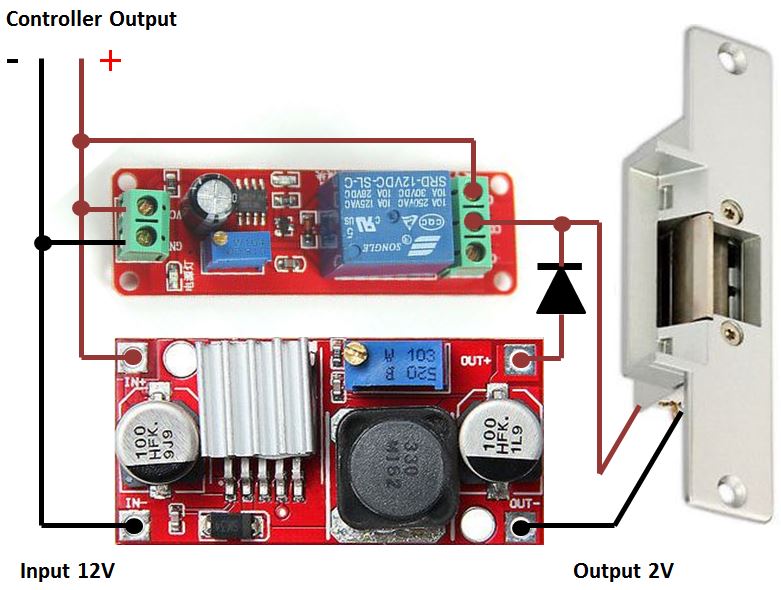In this post I’d like to show you a very simple way to reduce the power requirements of electric strike that was used in Electronic Lock project. It doesn’t require any modification of the existing hardware/software contrary to PWM and can be implemented by using widely available and cheap modules. The idea behind this circuits is simple. No matter how the electric lock is build, for example if a code is needed to open the door or by using RFID readers eventually a mechanical component usually a solenoid will be energizes for a defined period of time let’s say 5 sec in order to open or close the door. During this time the solenoid will consume its max current about 1A. However what if you need to keep the door open for longer. For example the first half of the day a door should remain open and for next 12 Hours close. In this case the electric strike will consume full 1A at rated voltage for the entire period. How can we reduce the power required by the lock without modifying the existing design. The solution is based on the fact that in order to keep the electric strike in open state you’ll need much less voltage than to open it initially. I’ve experimented with several types of standard 12v electric strikes and it seems that 8 – 12v at 700mA – 1A are sufficient to open it, however if you reduce the voltage to about 1-3V immediately after unlatching the electric strike will remain open while consuming only a tens of its rated current about 70mA. So after this short explanation let’s see how it can be done. Here is the schematic of this design.
I have used a standard 12V 0-10s delay board based on 555 and DC-DC LM2596 converter to switch the electric strike voltage from 12V to 2V after 10 sec. Of course you’ll need to experiment with your design to determine what is the minimum voltage to keep it open.

